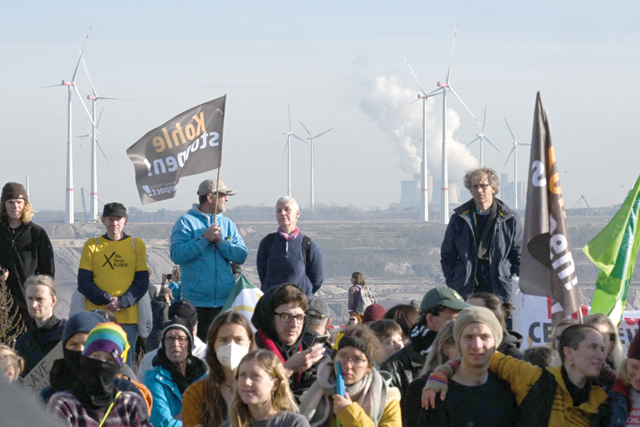LÜTZERATH, Germany — After the last farmer packed up and left in October, climate activists are the only people left in the village of Luetzerath, Germany, which sits above a rich vein of coal.
In huts perched six metres above ground in the trees, the young campaigners say they can hold out against the authorities if they try to clear them out.
They are there in an effort to stop the village being bulldozed to allow the extension of a neighbouring open-air coal mine.
They do not know when the police might come to force them out, but with Germany in need of more coal, most think it will be soon.
Europe's largest economy has restarted part of its mothballed inventory of coal power plants to relieve the pressure on gas-powered facilities, following a cut to supplies from Russia in the wake of the invasion of Ukraine.
More than a thousand protesters descended Saturday on Luetzerath, now a symbol of the resistance to fossil fuels, to urge more action from participants at the COP27 conference in Egypt.
Many had painted their faces with the words "Stop coal".
Activists unfurled a huge yellow cross — a symbol against coal mine expansion — in a field.
Alma, a French activist who uses a pseudonym, earlier said she did not know when the evacuation was planned.
"It's a question of responsibility, one that is difficult to take for the authorities because it's a huge operation, for which thousands of police officers need to be mobilised over several weeks," she said.
Mining deal
After studying, Alma decided to go full time as an activist and was one of the first to set up the activist camp in Luetzerath two years ago.
One by one, the residents of Luetzerath have left as their homes were expropriated and they were compensated and rehoused.
She and the dozens of others who have joined her in the occupied village felt betrayed earlier this year when the government, led by Social Democrat Olaf Scholz, announced a compromise with the energy giant RWE to allow the extension of the nearby mine.
Under the agreement, five nearby villages will be spared, but Luetzerath is set to disappear.
Even though RWE, long one of Europe's biggest emitters, said it would stop producing electricity with carbon in 2030, the activists are not persuaded.
"If RWE extracts all the coal under Luetzerath, Germany will certainly violate the Paris [climate] accord because of the emissions from the mine. The village is therefore not just a symbol, it's a critical point in the fight against climate change," said Alma.
'In danger'
On the other side of the road, sits the coal pit, where excavators move across golden-black dunes of sand.
The lignite still in the ground here will be needed "from 2024" to supply power plants as other mines close, RWE says.
According to a 2021 report by the DIW economic think-tank, the energy company could extract a further 100 million tonnes of coal without having to demolish Luetzerath and the other five villages.
Despite resorting to more coal power in the current energy crisis, Germany says it is not wavering from its aim of exiting coal power in 2030.
The climate activists want action accelerated to bring down emissions.
In recent months, some activists have turned to more extreme means to get their voices heard — including by glueing themselves to main roads and halting traffic.
Recently, some activists also flung mashed potatoes at a Monet painting in a Potsdam museum.
In Luezerath, climate activists have set up an intricate camp in the trees to avoid being quickly evicted by the police.
Using a network of cables, they have connected their encampment. The militants think they can hold out for several weeks, 6 metres above the ground.
On the ground in the middle of the camp, around twenty militants try to raise a pole made of a giant tree trunk with a system of pulleys.
"The poles are tied to the trees in a way that ought to make it impossible to cut the ropes without putting someone's life in danger," Alma says.
Underlining their commitment, an anonymous activist said facing death is the activists' "entire strategy".
